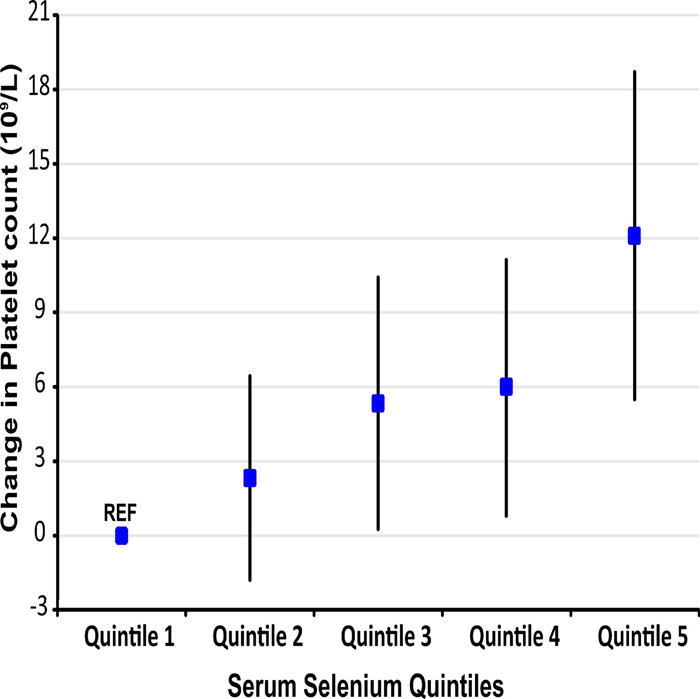Background:
Platelets play an important role in arterial thrombosis, acute coronary syndrome, and cardiovascular disease. Some epidemiological studies have suggested that high serum selenium levels may be associated with decreased risk of thrombosis and cardiovascular disease due to selenium’s anti‐oxidant effect. However, a relationship between blood platelet counts and serum selenium has not been explored. Therefore, we aimed to examine the association of serum selenium levels with platelet count in a large cohort of US population.
Methods:
We used the Third National Health and Nutrition Examination Survey (NHANES III) to examine the association between serum selenium levels and platelet count in individuals > 20 years. Serum selenium was measured using atomic absorption spectrometry under extensive quality control procedures (detection limit >8ng/mL). Platelet count was measured in duplicate by using the Coulter Counter. We used linear regression models to estimate unadjusted and adjusted (for age, sex, race, diabetes, hypertension, iron deficiency, red blood cell folate, alcohol use, body mass index, glomerular filtration rate, and serum C‐reactive protein) coefficients and 95% confidence interval (CI) using Sata (version 12.0 for Windows) and taking into account the complex probability sampling survey design of NHANES III.
Results:
Among the 14,439 eligible participants, 53% were females, 69% were Caucasians, 26% were >65 years, 36% had hypertension, 25% were smokers and 7% were iron deficient. Mean (standard deviation) serum selenium level was 123(17.6) ng/mL. Serum selenium levels were significantly lower in females, non‐Caucasians, smokers, and those with iron deficiency (all p<0.001). While there was no association in unadjusted model (p=0.23), serum selenium was significantly associated with platelet count after adjustment for confounding variables; each ng/mL increase in serum selenium levels was associated with 0.25 x 109/L (95%CI = 0.13 to 0.38, p<0.001) increase in platelet count. Individuals in the highest quintile had 12 x 109/L higher platelet count than individuals in the lowest quintile of serum selenium levels (95%CI = 5.5 to 18.7, p<0.001) (Figure).
Conclusions:
Higher serum selenium levels are independently and significantly associated with higher platelet count. This relationship may attenuate some of the antioxidant effect of selenium on thrombosis and atherosclerosis. The mechanisms underlying this association need further study.

